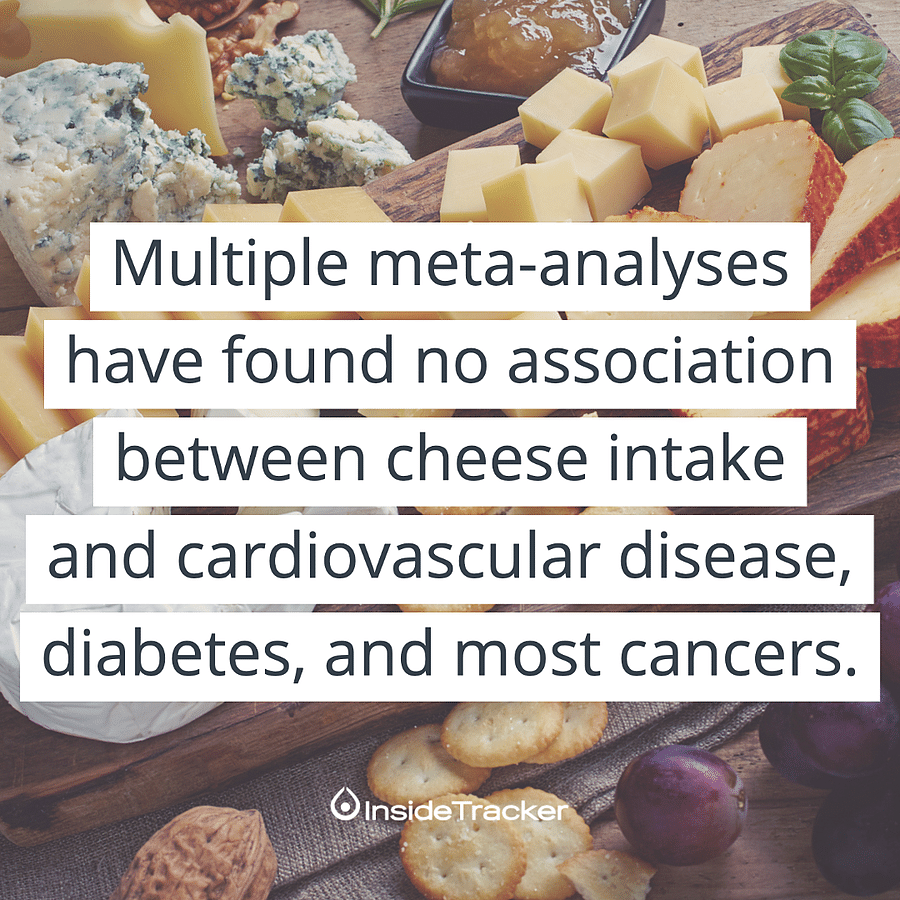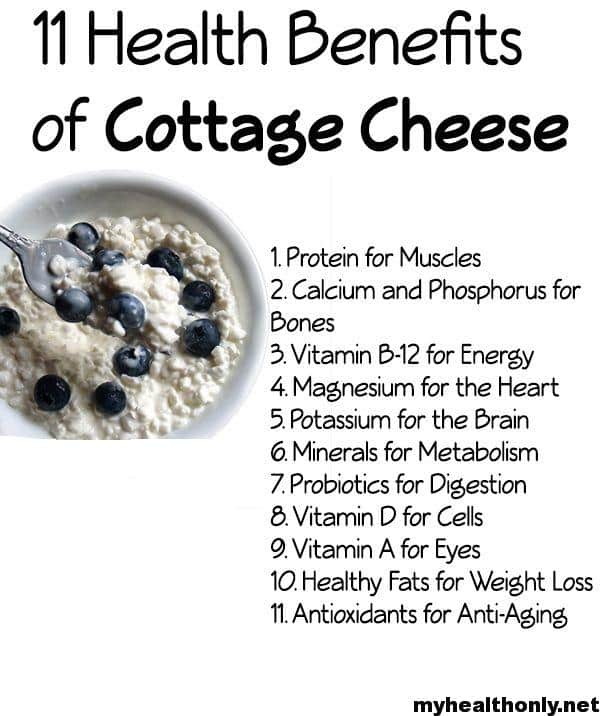What Is The Benefit Of Cheese For Type 2 Diabetes
Cheese can be included in any diet because it contains protein, vitamins and minerals, and healthy fats. Cheese can be a great addition to a type 2 diabetes diet as long as it is consumed in moderation.
At least one study¹ has found that cheese may actually be able to lower the risk of developing type 2 diabetes.
Why Dairy Causes Insulin Surges
Dairy contains carbs, in the form of lactose, so we expect it to trigger some insulin release insulins job is to clear glucose from the bloodstream. But research shows that consuming dairy consistently triggers disproportionately high surges of insulin, given its carbohydrate load by a factor of 3-6 times, according to one study of healthy subjects. In contrast, when researchers gave subjects pure lactose, their insulin response matched its glycemic index, suggesting something unique about dairy causes it to kick insulin response into overdrive. The exact reason for dairys insulinogenic nature is unknown, but researchers believe the proteins in milk play a role. For example, multiple studies show that whey protein increases post-meal insulin by as much as 90%. Other factors may include amino acids released after eating or altering the timing of the release of incretin hormones, which stimulate insulin secretion.
Until we have a better understanding of the short- and long-term effects of dairy on individuals, theres no easy research-driven answer for whether or not to include dairy in your diet.
Cheese Improves Insulin Sensitivity
For the study, Catherine Chan a professor in the Faculty of Agricultural, Life & Environmental Sciences at the University of Alberta in Edmonton, Canada and her collaborators looked at how prediabetic rats fared on a diet of regular cheese compared with low-fat cheese.
The team fed the rats a high-fat diet for 4 weeks to make them prediabetic. Then they added either regular Cheddar cheese or low-fat Cheddar cheese to the diet of some of the rats for an additional 10 weeks. The rats in the control group received a low-fat diet throughout the study.
There were no differences in the levels of fasting blood glucose or fasting insulin after the rats had been on their respective trial diets for 10 weeks.
When the team tested how well the animals were able to regulate their blood sugar after an injection of insulin, the animals who received cheese in addition to a high-fat diet had results similar to those on a low-fat diet. However, the results were significantly different from those of the rats on the high-fat diet alone.
Chan explained the following about her results in a press release: The cheese didnt totally normalize the effects of insulin, but it significantly improved them. And it didnt matter whether it was low-fat or regular cheese.
Yet, when the team used a different test the Oral Glucose Tolerance Test , which measures blood sugar levels before and after a high dose of glucose they found no difference in the way that the animals reacted.
You May Like: Will Peanut Butter Raise Blood Sugar
What Type Of Cheese Is Good For Type 2 Diabetes
Having a healthy diet is a crucial part of managing type 2 diabetes. Measuring carbs, sugar, calories, and more are some indispensable steps to creating a great meal plan.
In this scenario, cheese and other dairy products have become a sticking point. It is believed that cheese is not good for diabetes. However, cheese can actually be a healthy component of your meal plan if you have type 2 diabetes, as long as it is consumed in moderation and as part of a balanced diet.
Have you considered clinical trials for Type 2 diabetes?
We make it easy for you to participate in a clinical trial for Type 2 diabetes, and get access to the latest treatments not yet widely available – and be a part of finding a cure.
Can Eating Yogurt Prevent Type 2 Diabetes

A study published in 2014 looked at the link between eating yogurt and the risk of developing type 2 diabetes and it found that people who ate large amounts of yogurt cut their risk of developing type 2 diabetes. However, the length of the study was too short to draw any firm conclusions, despite being reported as such in many newspapers. More research is needed before we can change our advice. What we do know is that the best way to reduce your risk of type 2 diabetes is by maintaining a healthy weight, being physically active and eating a healthy, balanced diet thats low in salt, fat and sugar.
Recommended Reading: Does Sweating Lower Blood Sugar
Engage With Your Blood Glucose Levels With Nutrisense
Your blood sugar levels can significantly impact how your body feels and functions. Thatâs why stable blood glucose levels can be an important factor in supporting overall wellbeing.
With Nutrisense, youâll be able to track your blood glucose levels over time using a CGM, so you can make lifestyle choices that support healthy living.
When you join the program, our team of credentialed dietitians and nutritionists are available for additional support and guidance to help you reach your goals.
Ready to take the first step? Start with our quiz to see how Nutrisense can support your health.
Find the right Nutrisense program to help you discover and reach your health potential.
Favor Lean Proteins Over Fatty Cuts Of Meat
Many cuts of red meat are high in unhealthy saturated fat, says Kimberlain, Too much of this type of fat increases your risk for heart disease, the AHA notes. Because people with diabetes are already at higher risk for heart disease compared with those without diabetes, Randall recommends limiting fatty cuts of meat in favor of foods that supply healthy fats, such as fish, nuts, and avocado, as well as lean proteins like skinless chicken and tofu. Fatty meats include poultry with skin, ground meat with a high fat percentage, prime cuts of beef, and processed meats like sausage and bacon, according to the Mayo Clinic.
You May Like: Is Sugar Bad For Your Health
Cheesy Keto Broccoli Cauliflower Tots
Image: Cheap Recipe Blog
Saying goodbye to your favorite starchy sides doesnt mean you have to give up tots forever. These cheesy no-tater tots are made with broccoli and cauliflower, giving you a sneaky dose of veggies and fiber. And since theyre mixed with almond flour, parmesan, and garlic powder, they fit perfectly into a diabetic-friendly meal plan.
Watch Out For The Sodium
People with diabetes need to limit sodium, as it can elevate blood pressure and lead to cardiovascular problems. Some cheeses are higher in sodium than others. For example, feta cheese has 316 milligrams of sodium in 1 ounce, while mozzarella has just 4 milligrams of sodium per ounce. You should check labels and choose low-sodium options when possible.
The USDA recommends that adults and children over 13 limit sodium to
Read Also: How You Know When Your Sugar Is Low
How Cheese Affects Your Blood Sugar
People who are living with diabetes must pay close attention to their food’s glycemic index and carb content. GI is a numbered scale ranging from 0 to 100 that represents how quickly a particular food causes blood sugar to rise. The higher the number, the more rapidly that food increases blood sugar.
Foods with a high glycemic index tend to be high in carbohydrates. Fortunately, most cheeses contain little to no carbohydrates and rank low on the GI scale. That’s good news for people with diabetes who love cheese, since low-GI foods have been shown to help people manage their type 2 diabetes and maintain a healthy weight, a significant risk factor for diabetes, per the Harvard T.H. Chan School of Public Health.
However, GI is not the only thing that you should take into account. Kelsey Lorencz, RDN, a registered dietitian nutritionist and nutrition advisor for Fin vs. Fin, tells EatingWell, “Cheese is a great source of protein and fat, both of which can help slow down the digestion of carbohydrates and lead to a more steady rise and fall in blood sugar.”
Cheese Is High In Fat And Calories
Studies have shown that as far as reducing ones risk for cardiovascular disease, dairy fat isnt the best choice. While dairy fat can be eaten in moderation, unsaturated fats from vegetable oils, nuts, seeds, avocados, and some fish are healthier choices.
The U.S. Department of Agriculture recommends that less than 10 percent of your daily calories should come from saturated fats.
Cheese is also high in calories, so portion control is important. For example, 1 ounce of cheddar cheese has 113 calories. Reduced and nonfat cheeses may be healthier options.
You May Like: How To Adjust Blood Sugar Levels
Combining Foods Affects Glycemic Index
Combining foods will alter the GI. Pair low-GI foods with high-GI foods to create a meal that more moderately affects your blood sugar. Foods with higher proportions of protein and fat will often have minimal impact on blood sugar. For example, adding a low-GI food such as cheese to a slice of bread will result in a lower GI than eating the bread alone. Specifically, a slice of white bread with skim milk cheese has a GI of 55, and a slice of white bread alone has a GI of 71, according to the 2002 International Table of Glycemic Index and Load.
Its A Good Source Of Fiber

One half of a small avocado, which is the standard amount people eat, contains about 5.9 grams of carbohydrate and 4.6 grams of fiber.
According to the National Academies, the minimum recommended daily fiber intake for adults is:
- women 50 years and younger: 25 grams
- women over 50: 21 grams
- men 50 years and younger: 38 grams
- men over 50: 30 grams
A 2012 review published in the Journal of the American Board of Family Medicine looked at the results of 15 studies involving fiber supplements for people with type 2 diabetes. They found that fiber supplements for type 2 diabetes can reduce fasting blood sugar levels and A1c levels.
You dont need to take supplements to achieve these results. Instead, try eating a high-fiber diet. You can easily increase your fiber intake by eating more low-carb fruits, vegetables and plants, like avocados, leafy greens, berries, chia seeds, and nuts. Here are 16 ways you can add more fiber to your diet.
Also Check: What Happens If Your Sugar Is Too High
Our Favorite Types Of Cheese And Their Health Benefits
Now that you know a good amount about cheese and its health benefits, weâre sure youâre looking forward to adding some of this delicious food to your shopping cart. Remember that moderation is key to a healthy diet, but donât make drastic changes without consulting a healthcare professional.
There are so many types of cheese to pick from how do you decide what to get? Some of the most popular varieties include mozzarella, feta, cottage cheese, goat cheese, ricotta, Swiss cheese, cheddar, gouda, parmesan, blue cheese, and brie. Hereâs a list of some of our favorites and a little more about their nutritional content.
Can Help You Prevent Blood Sugar Spikes
Protein is involved in many critical bodily functions, such as muscle growth, immune health and tissue repair. Additionally, protein intake can also help regulate your blood sugar and prevent spikes by blunting the absorption of carbohydrates. In addition, protein is highly satiating and helps curb your appetite, so you’re less likely to overeat or crave sugary and low-nutrient foods.
Like saturated fat, the protein content of cheese varies widely. For example, 1 ounce of Parmesan cheese provides 10 grams of protein and 4.2 grams of saturated fat, while 1 ounce of sharp Cheddar cheese contains 6.7 grams of protein and 5.4 grams of saturated fat.
Don’t Miss: How Much Sugar Is In Lactaid Milk
High Calorie Foods May Or May Not Cause The Blood Sugar Level To Rise
Many people think that all high-calorie foods raise blood sugar level, but this is not always the case.
In general, foods that cause blood sugar level to rise the most are those that are high in carbohydrates, which are quickly converted into energy, such as rice, bread, fruits and sugar. Next are foods high in protein, such as meats, fish eggs, milk and dairy products, and oily foods. However, even though carbohydrates affect blood sugar levels, if you don’t eat them your diet will be unbalanced and you won’t feel satisfied after your meal, which can lead to excessive consumption of foods rich in protein and fat.
Food containing three major nutrients
| Carbohydrates |
|---|
Baked Cheese Crisps And Sliced Veggies
Select a great-tasting, low-calorie baked cheese crisp or cracker when you want a tasty snack. These are available in the snack aisle at the grocery store. A 1-oz serving from the brand Moon Cheese, which is made from 100 percent cheese, contains just 1 g of carbs.
This snack complements any sliced raw veggie, which is a naturally fat-free, low-cal snack. Cheese crisps taste delicious, for example, with a 1-cup serving of cool, crisp, and hydrating cucumber slices.
Recommended Reading: Where To Find Sugar Mommies
Impact On Blood Sugar Levels
Because carbs are responsible for the amount of sugar that enters your system, cheese, which contains barely a trace of carbohydrates, doesn’t raise blood sugar. Processed cheese has more carbs than natural cheese, but the U.S. Department of Agriculture reports that a slice of American cheese has only 1 gram, so it’s still very low in carbs. According to a January 2002 report in the American Journal of Clinical Nutrition, consuming even a large amount of cheese is unlikely to boost your blood sugar.
A Whole Grain Waffle With Yogurt And Cinnamon
This delicious pick is plenty filling and easy to grab on the go. Toast up one whole-grain frozen waffle for 90 calories and 17 g carbs, per the USDA. Top with 3 tablespoons of plain, low-fat Greek yogurt to add 3.5 g of protein. Greek yogurt contains more protein and fewer carbohydrates compared with traditional yogurt. Dust cinnamon, which is a healthy, natural sweetener, over the top for a quick 110 calorie snack. Or spread on some almond butter for a dose of healthy fats. One tbsp contains about 100 calories, per the USDA.
Don’t Miss: Does Drinking Water Help Blood Sugar
If You Eat It You Might Spike
Imagine your typical dessert. How does it look? Smell? There are a few things you might envisionsomething warm and gooey that smells delicious, is freshly baked or cold and creamy. Regardless of your preference, one thing most desserts have in common is their high carbohydrate content. The combination of flour, sugar, and dairy found in most high-carb desserts can contribute to blood sugar spikes, making diabetes harder to manage.
For example, a single serving of strawberry cheesecake may contain more than 30 grams of carbohydrates. Eating too many carbs in one sitting can cause blood sugar spikes, but what if you could avoid a spike altogether?
Good news! If youre looking to enjoy your favorite dessert AND stay on top of your diabetes management, read on. These diabetes-friendly tips can help.
What Are The Best Cheeses For Type 2 Diabetes

While cheese can be part of a balanced diet, not all cheeses are created equal. Some cheeses contain more calories per serving, some have high salt content, while others are chock full of artificial flavorings and colors.
Here are some of the healthiest cheese options for people with type 2 diabetes.
Also Check: What To Eat With No Sugar Or Carbs
How Many Carbs Can You Eat If You Have Diabetes
According to the Centers for Disease Control and Prevention , theres no one-size-fits-all carb target for people managing diabetes. Ultimately, the amount depends on factors such as your age, weight, and activity level.
As a general rule, though, people with diabetes ought to get about one-half of their daily calories from carbs. To identify your daily carb need, multiply 50 percent by your daily calorie target. For example, if you eat 2,000 calories a day, aim to consume about 1,000 calories of carbs in food and drink. Because the CDC says 1 gram of carbs provides 4 calories, you can divide the calories of carbs number by 4 to get your daily target for grams of carbs, which comes out to 250 g in this example. For a more personalized daily carb goal, its best to work with a certified diabetes care and education specialist or a registered dietitian to determine a goal that is best for you.
Can Eating Cheese Be Healthy
If you can tolerate dairy products, they can be some of the best sources of calcium, proteins, and other nutrients. Milk also contains all nine essential amino acids that your body cannot produce on its own. These amino acids can combine and form protein chains. They can be divided into two main groups: casein, which coagulates and forms cheese, and whey protein.
The most common type of fat found in cheese is saturated fat. So even with all the benefits, remember that some cheeses are a high-fat, high cholesterol option and may not be the healthiest addition to your diet. Cheese contains ten times more fat than milk, with 65 percent of saturated fats. However, the linoleic acid present in milk is a trans-fatty acid that has some health benefits. It has anticarcinogenic properties, promotes muscle growth, and may also have some anti-diabetic properties.
Another component of milk is lactose, the milk sugar. The lactic acid bacteria break lactose down into glucose and galactose to use as an energy source.
Some types of cheese, like mozzarella, cheddar cheese, and cottage cheese, also contain probiotics. These can support gut health and improve digestion in some people.
Recommended Reading: What To Take For High Blood Sugar